Albinism – Information and Support
Albinism is a hereditary condition in which the body produces little or no melanin, the pigment that gives colour to the skin and hair, people with the condition commonly have lighter coloured skin and hair. Vision problems are prevalent with albinism.
How does Albinism affect sight?
Albinism can affect sight in a variety of ways. Firstly, melanin is important to the development of the optic nerves. It can cause the fovea, which is part of the retina, to be underdeveloped. Albinism can also affect the iris part of the eye, it can cause it to be pale and thin with gaps in it. This allows more light to travel into the eye and causes blurred vision.
As the pigment in the eye absorbs light and helps us tolerate certain bright lights, the lack of pigment in these structures can cause people to become sensitive to light, this is called photosensitivity. Albinism is non-degenerative, and vision, on occasion, may improve until adolescence, after which it remains fairly stable unless additional eye conditions develop.
Albinism explained
Tamara explains how albinism is caused and how if affects her sight.
Eye Problems Associated with Albinism
- Poor Eyesight: Albinism can cause either near-sightedness (myopia) or farsightedness (hyperopia).
- Low Vision: Some individuals experience sight loss that cannot be corrected.
- Astigmatism: The cornea (clear front layer of the eye) may not be perfectly curved, leading to blurred vision.
- Photophobia: Sensitivity to light.
- Nystagmus: Involuntary side-to-side eye movements, affecting vision.
- Squint (Strabismus): Eyes pointing in different directions
- Retinal development.
Diagnosis and types of Albinism
Physical characteristics and the appearance of a person with albinism are usually enough to diagnose the condition. However, it is important to remember that not every person with albinism presents in the same way and there can be variations.
Genetic testing can also be used to confirm if a person has the condition:
There are two main types of albinism:
- Oculocutaneous albinism (OCA) – the most common type, affecting the skin, hair and eyes
- Ocular albinism (OA) – a rarer type that mainly affects the eyes
Treatment of Albinism
There is no treatment or cure for albinism but it can be managed with treatment. Any treatment a person is offered will be given to help improve quality of life and ease symptoms.
Any interventions regarding eye or vision problems will depend on the individual and their specific symptoms. Some people may need to wear corrective lenses and nothing more. Others whose vision is severely impaired may need low-vision support, such as large-print or high-contrast reading materials and large computer screens. In terms of photosensitivity the following is suggested:
- Stay out of sunlight and keep the lights dimmed inside.
- Keep your eyes closed or cover them with dark, tinted glasses.
- Wear polarized sunglasses when you’re outdoors.
- Wear a hat or cap to provide shade for your eyes.
Helpful Links and Organisations
Albinism Fellowship
UK based charity that supports children and adults who are living with Albinism. The Fellowship is a positive and sociable volunteer-run organisation that aims to provide information, advice and support for people with Albinism and their families. They also provide information about the condition to professionals working with people with Albinism.
Click here to find out what ways they can support you.
Click here to find out more about their Baby Box initiative.
Click here to find out more about their events.
Guide Dogs UK
A national UK based charity that has developed a wide range of services with and without dogs to support people living with a vision impairment. Children and adults. Friends and family. They have an albinism support section on their website that provides in depth information about supporting a child with the condition.
Click here to find out more about living with Ocular Albinism.
Connect with other parents and find support with VICTA
Join the VICTA Parent Network – with almost a thousand members! You’ll find parents who have vision impaired children of all different ages and with various eye conditions. You can use the group to ask questions you may have and connect with parents of children with shared conditions or from your local area.
Visit the support section of the VICTA Parent Portal here to find out about support groups, both in your area and online.
VICTA activities
VICTA is a national charity supporting children and young adults who have a vision impairment from 0 to 29 years. We have a calendar of fun and engaging activities across the year to help young people make friends, grow in confidence and gain the skills they need for an independent future.
Visit the VICTA activity calendar >
Stay up-to-date with VICTA’s news and latest activities on social media @VICTAUK.
Albinism stories to follow
There are parents and young people sharing their albinism journeys to help raise awareness, here are some accounts you may enjoy following:
Blind Mum Vs the World
@blindmumvstheworld on Instagram.
Hannah is a content creator sharing her journey as a parent and young person with oculocutaneous albinism, nystagmus, photophobia and Oscillopsia and her guide dog.
Albinism Adventures
@albinismadventures_harry on Instagram.
Toddler Harry has Oculocutaneous Albinism and his family share the journey from diagnosis, through development stages and raise awareness for what the condition involves.
Harry and mum Jessica
@harrytathamsanderson on Instagram.
Mum Jessica share Harry’s journey enjoy the world around him and raising awareness for young children with albinism.








